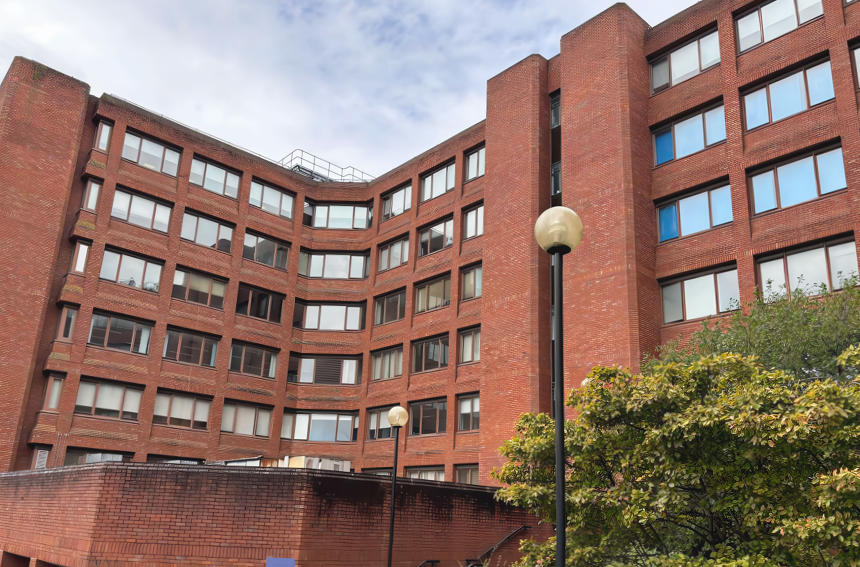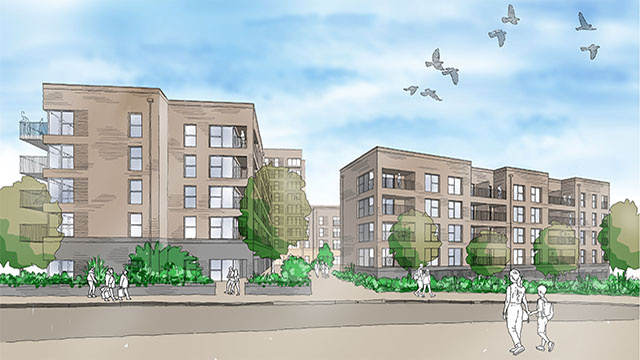Beth Wilton explains how businesses can protect themselves from neighbours’ noise nuisance claims.
It has been reported that between April 2020 and March 2021 there was a substantial rise in noise complaints to local councils. Although many of these complaints will have been related to noisy neighbours, some may have been caused by businesses, particularly in mixed residential and commercial areas. The increase in home working during the various lockdowns will likely have contributed to the rising numbers of complaints and, given that many sectors seem set to have a more permanent shift to home or hybrid working, this trend seems likely to continue.
A rise in the use of brownfield land for housing, as recently proposed in the Budget, may also contribute to further increases. As such, now seems a good time for businesses and their advisers to assess the impact of their activities on their local communities, refresh themselves on the law surrounding noise nuisances and plan, as far as they are able, a strategy to minimise the risk of costly litigation, fines and expensive noise abatement works.
How nuisance works
There are two types of common law nuisance: public and private nuisance. Private nuisance is more frequently encountered in practice and will be the focus of this article. Private nuisance is caused by someone doing something on their land which causes physical damage to a neighbour’s land and/or unreasonable interference with their use and enjoyment of their land. The primary remedy is an injunction requiring the nuisance to cease. Damages may also be awarded. When it comes to noise, these are usually calculated by reference to the diminution in value of the claimant’s property as a result of the nuisance.
To the dismay of many defendants, a planning permission authorising the activity is not a defence. Where a noise has been emitted for at least 20 years, a defendant can defeat a claim by arguing that it has acquired a prescriptive right to make the noise. As with prescriptive rights generally, the noise must have been emitted without force, secrecy or permission. Finding evidence that covers a 20-year period can be challenging in itself. Further, many claims fail because the extent of the easement cannot be accurately identified. This can be particularly difficult with noise which is often intermittent in frequency and volume. Further difficulties arise because the noise must have amounted to a private nuisance for the 20-year period. Such instances will be rare given that, if a noise was so significant as to amount to a nuisance, one would expect adjoining owners to complain about it. Such complaints would interrupt the 20-year period of prescription as the noise would be being emitted “by force”.
In light of the limited defences available, a defendant’s focus will instead be on proving that no nuisance has arisen in the first place. The courts have long accepted that a certain level of noise passing over adjoining land is reasonable. This is a principle of “give and take” between neighbours. Unless the noise is unreasonable for the area or is being carried out in an unreasonable way, it will not usually be a nuisance. To determine this, the court undertakes a balancing exercise, weighing up factors such as the local area’s character, the duration, frequency and volume of the noise and the time of day it occurs. It will also determine whether reasonable steps have been taken to minimise the impact the noise has on the claimant.
Change of use
The use to which the claimant’s land is being put is also relevant. For, while it is no defence that the claimant came to a pre-existing nuisance, the position may be different if the noise is not a nuisance until the claimant changes the use of its land.
This was a key issue in Jones and another v Ministry of Defence [2021] EWHC 2276 (QB); [2021] PLSCS 147, where the defendant had used its land as an RAF training ground for about 70 years. The adjoining land was a reservoir until the claimants redeveloped it as a holiday park. The court found that steps had been taken to minimise the impact of the noise on the claimants, the noise had not worsened over the period of the claim and no nuisance had occurred prior to the change of use. Accordingly, the aircrafts’ noise could be taken into account as forming part of the area’s character. The defendant’s activities were, therefore, held to be reasonable so no nuisance was occurring.
Whether a defendant can utilise these arguments will be fact-specific. Evidencing a mere change of use by the claimant will not suffice; the change must be one that is materially more sensitive to the noise in question.
Statutory nuisance
Where a private nuisance claim can give rise to expensive, time-consuming litigation, it is often much cheaper for a complainant to secure an end to a nuisance using the statutory nuisance regime in the Environmental Protection Act 1990. This is because the local authority bears the onus and cost of investigating the issues and taking enforcement action. As such, this can be a useful tool for individual complainants alone or in conjunction with a private nuisance claim.
Noise emitted from premises can amount to a statutory nuisance. In almost all cases, the noise must either be, or be likely to be, a common law nuisance or “prejudicial to health”. Noise may be prejudicial to health in a variety of ways including impacting on sleep, mental health or hearing. Once a potential nuisance is reported, the local authority will investigate it. If it considers that there is such a nuisance and the defendant is unlikely to voluntarily abate it, the local authority will serve a noise abatement notice. If the defendant does not cease the nuisance within a reasonable time frame without a lawful defence, it could face an unlimited fine and be charged with a criminal offence.
The defences available in statutory noise nuisance claims are limited. This can be extremely frustrating for defendants but can be rationalised as a policy decision to prioritise public health over business need.
Where the nuisance is not determined to be prejudicial to health, if the noise has been made for a long period of time without previous complaint, it may be possible to utilise some of the arguments made in Jones to prove no common law nuisance has arisen, thereby defeating the statutory nuisance claim made on this ground.
Therefore, although Jones has primarily provided guidance for private nuisance claims, it may also prove useful for defendants in statutory nuisance, potentially shielding them from expensive abatement works or costly fines.
Best practicable means
Where there is a nuisance but the principles in Jones do not apply or the noise is prejudicial to health, the only defence is likely to be that the best practicable means have already been used to abate the nuisance but this has not resulted in an end to the nuisance in practice (the BPM defence).
This defence can be summarised as the defendant using its property and equipment in the way that is most likely to reduce the nuisance but is also reasonable for the defendant taking into account the local area, current technology and financial implications on the defendant. It does not apply indefinitely so a defendant must consider at intervals whether any changes in circumstances, including technology or its own finances, means the defence no longer applies.
Where a solution is available but expensive, a commercial entity may struggle to make out the BPM defence. Further, although it may be possible for landlords to recover the cost of abatement works from their tenants via the service charge, this will depend on the drafting of the lease and whether there are any caps in place.
Practical steps
So what can a business do to protect itself when it thinks it might face complaints about an ongoing activity causing noise to be emitted over neighbouring land?
In light of the legal and evidential hurdles that must be met to defend a claim in nuisance, planning law will be key. This is because the agent of change principle in the National Planning Policy Framework places the onus on planning applicants to ensure their development takes into account any activities that are already lawfully taking place in the area.
Where notices of planning applications are received, a business should assess whether there is a risk that its activities may become a nuisance, report any objections to the planning authority and challenge any unacceptable permission granted within the deadlines. In cases where no planning angle can be utilised, to minimise the risk of nuisance claims being successfully made businesses need to ensure they are both taking reasonable steps to minimise the impact of noise on their neighbours and retaining as much evidence as possible of the levels of noise emitted for use in any dispute.
Beth Wilton is an associate in the London real estate disputes team at Addleshaw Goddard LLP








